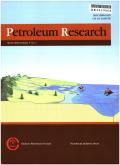New approach for the performance of reservoirs depleted by long horizontal wellbores with closed sections
IF 4
Q1 Earth and Planetary Sciences
引用次数: 0
Abstract
This paper introduces a new approach for reservoir performance where long horizontal wellbores are extended in the porous media with the existence of closed sections. It focuses on the impact of these sections on the pressure behavior, flow regimes, and productivity index considering different characteristics for the closed sections in terms of the length and petrophysical properties. The methodology used in this approach includes different tasks. The first is developing analytical models for the pressure drop caused by the production at a constant sandface flow rate from a horizontal wellbore where a part of it is closed. These models are developed based on the fact that the porous media with the existence of the closed sections in the horizontal wellbores consists of three regions. The first represents the porous media in the vicinity of the open section of the wellbore and extends to a distance equal to half the formation thickness while the second is the porous media of the open section that extends beyond the first region and reaches the reservoir boundary. The third region represents the porous media of the closed sections that extend from the wellbore to the reservoir boundary. In the second task, the proposed models are solved for different reservoir configurations, wellbore lengths, and closed and open section characteristics. The impact of closed sections on transient and stabilized pseudo-steady state productivity indices are demonstrated in third tacks while the analytical models of the observed flow regimes in the porous media are presented in the fourth task with a major focus given to those impacted by the closed sections. The outcomes of this study can be summarized in the following points: 1) The pressure behavior, flow regimes, and productivity index are significantly influenced by the existence of closed sections. This influence is significant during early production time, but it decreases during intermediate production, however, it is not seen at late production time. 2) The impact of closed sections becomes more severe when the petrophysical properties of the closed sections are greatly different from those of open sections. 3) The pressure behavior of early production time is not affected by the petrophysical properties of the closed section porous media while pseudo-steady state flow is significantly impacted by these properties. 4) The pressure and pressure derivative behaviors of long horizontal wellbores with long closed sections are similar to those developed in reservoirs depleted by hydraulic fractures. 5) Reaching pseudo-steady state flow may need a longer time when there is a great difference in the petrophysical properties between closed and open sections, however, the length of the closed sections may not have such impact. The novel point that has reached in this study is observing a new bi-linear flow regime instead of a linear flow regime. This flow regime represents a simultaneous linear flow from the closed section porous media to the open section and from the open section to the porous media in the vicinity of the open section of the wellbore. New analytical models for the pressure and pressure derivative of this flow regime is introduced in this study.
封闭长水平井枯竭油藏动态的新方法
本文介绍了一种在封闭段存在的多孔介质中扩展长水平井的储层动态的新方法。考虑到封闭段在长度和岩石物性方面的不同特征,重点研究了这些段对压力行为、流动状态和产能指数的影响。这种方法中使用的方法包括不同的任务。首先是建立一个分析模型,分析在一定的砂面流速下,当水平井筒的一部分被关闭时,生产所造成的压降。这些模型是基于水平井中存在封闭段的多孔介质由三个区域组成的事实而建立的。第一个区域代表井筒开放段附近的多孔介质,延伸到相当于地层厚度一半的距离;第二个区域代表开放段的多孔介质,延伸到第一个区域之外并到达油藏边界。第三个区域表示从井筒延伸到油藏边界的封闭段的多孔介质。在第二项任务中,针对不同的油藏配置、井眼长度、闭井段和开井段特征求解所提出的模型。第三部分研究了封闭段对瞬态和稳定伪稳态产能指标的影响,第四部分研究了多孔介质中观察到的流动流态的分析模型,重点研究了受封闭段影响的流动流态。研究结果表明:1)封闭段的存在对压力特性、流态和产能指标有显著影响。这种影响在生产前期显著,在生产中期减弱,但在生产后期不明显。2)当封闭段的岩石物性与开放段差异较大时,封闭段的影响更为严重。3)封闭段多孔介质的岩石物性对早期生产时间的压力行为影响不大,而准稳态流动受岩石物性的影响较大。4)长封闭段水平井的压力及压力导数特征与水力裂缝枯竭油藏相似。(5)当封闭段与开放段岩石物性差异较大时,达到准稳态流动可能需要较长的时间,但封闭段的长度可能不会产生这种影响。本研究的新颖之处在于观察到一种新的双线性流型,而不是线性流型。该流态代表了从封闭段多孔介质到开放段以及从开放段到井筒开放段附近的多孔介质的同时线性流动。本文介绍了该流型的压力和压力导数的新解析模型。
本文章由计算机程序翻译,如有差异,请以英文原文为准。
求助全文
约1分钟内获得全文
求助全文
来源期刊

Petroleum Research
Earth and Planetary Sciences-Geology
CiteScore
7.10
自引率
0.00%
发文量
90
审稿时长
35 weeks
 求助内容:
求助内容: 应助结果提醒方式:
应助结果提醒方式:


